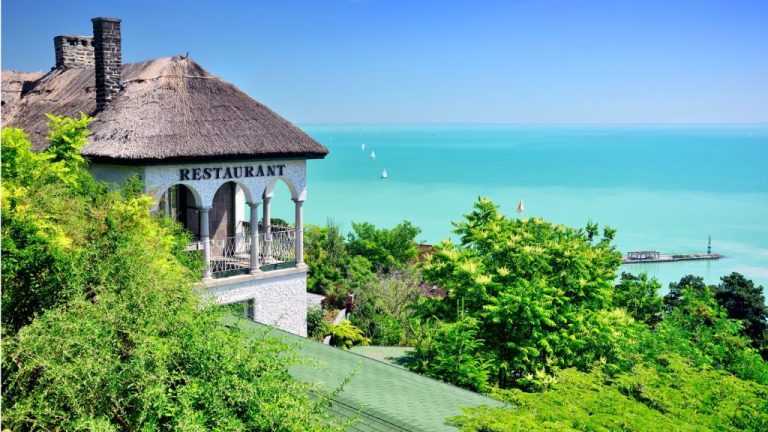When to go and what it costs
September emerges as the standout month for families visiting Portugal, delivering warm sea temperatures of 20-22°C, comfortable air temperatures around 26°C, and dramatically fewer crowds after schools resume—all while maintaining 30-50% lower prices than peak summer.
This sweet spot matters because Portugal has transformed from a quiet European secret into the continent’s eighth-most-visited country, where tourism exploded post-pandemic and summer crowds have grown notably larger.
When’s the best time to go to Portugal?
For families constrained by school calendars who must travel during peak periods, understanding the stark trade-offs between July-August’s warmest swimming conditions and the shoulder seasons’ superior value becomes essential to planning a successful trip.
Portugal’s Mediterranean climate creates distinct seasonal patterns across its regions. The Algarve south coast enjoys 3,200 annual sunshine hours and just 500mm of rainfall, making it Europe’s sunniest corner.
Porto receives three times that precipitation at 1,250mm annually, with temperatures consistently 3-5°C cooler than the south. These regional variations mean families can find suitable conditions nearly year-round by choosing the right destination. However, swimming season officially runs from June through September when lifeguard staff are on beaches and water temperatures exceed 18°C.
Summer brings peak conditions but maximum pressure on budgets
The months of July and August deliver Portugal’s warmest sea temperatures—reaching 22°C in the Algarve and 20°C along Lisbon’s Atlantic coast—making them genuinely comfortable for young children who otherwise find Portuguese waters chilly. Air temperatures hover around 28-29°C on the coast with 11-12 hours of daily sunshine and virtually zero rainfall. These conditions align precisely with summer break for Portuguese families (June-August), UK families (late July-August), US families (June-August), and all major European markets, including Germany, France, and Spain.
This perfect storm of demand drives accommodation prices 30-50% higher than shoulder season, with mid-range Lisbon hotels jumping from €99 in May to €150-200 in August. Algarve beach resorts can exceed €299 per night during peak weeks. Beyond pricing, families encounter sold-out tours, hour-long queues at Sintra’s Pena Palace, and beaches “packed with vacationers” where finding rental equipment becomes challenging. The intensity peaks in August when Portugal itself takes holiday—locals refer to this as the month when Lisbon empties and the coast swells.
Heat presents another consideration that families often underestimate. While coastal areas benefit from Atlantic breezes, the Alentejo’s inland areas regularly exceed 40°C and have recorded temperatures of 47.3°C. African heat waves can push even coastal Lisbon above 37°C for days. Air conditioning shifts from optional to essential, and families with young children should plan activities for early morning and late afternoon, avoiding midday exposure entirely.
Yet for families whose only option is summer break, these trade-offs bring undeniable rewards. Water parks operate full schedules from 10 am-6 pm, all boat tours run daily, and dolphin watching achieves 95%+ sighting rates. The Algarve’s sheltered south-facing beaches at Lagos, Tavira, and Albufeira provide calm waters perfect for beginning swimmers. Booking windows matter critically here: accommodations should be reserved 7-9 months in advance (by December for the following summer), flights 6-8 months ahead, and popular activities like Benagil Cave tours 2-3 months out.
Shoulder seasons deliver the golden window most families miss
May, June, and September represent Portugal’s most compelling travel windows, offering weather that ranges from excellent to ideal while crowds remain manageable and prices are reasonable. June particularly shines as what multiple sources call “the best month to visit Portugal”—combining glorious weather without summer extremes, fully operational tourist infrastructure, and pre-peak pricing. Sea temperatures reach 19-20°C, acceptably cool for hardy families though not as comfortable as peak summer. Air temperatures of 26°C feel pleasant rather than oppressive, and the 10-11 hours of daily sunshine match July’s offerings.
September might be even better. The Atlantic Ocean reaches its warmest temperatures around Lisbon at 20°C after months of summer heating, while Algarve waters maintain their 21-22°C peak. Air temperatures moderate to a comfortable 26°C, crowds dissipate dramatically as schools resume in early September, and accommodation prices drop by 30-40% from August levels. Families report beaches feeling spacious again, restaurants no longer requiring advance reservations, and popular attractions becoming enjoyable rather than stressful.
May works beautifully for families seeking the lowest prices and smallest crowds of the favorable-weather months, accepting that swimming remains marginal with sea temperatures of 17-18°C—tolerable for short periods but genuinely cold for extended water play. The month excels for families planning balanced itineraries combining Lisbon’s cultural attractions, Sintra’s fairytale palaces, Porto’s river cruises, and perhaps some beach time in the warmer Algarve, where children can wade and play even if swimming feels brisk.
Early October extends the season further, with the first two weeks offering warm conditions and swimming opportunities, particularly in the Algarve. UK half-term in late October creates a brief demand spike, but overall the month sees dramatically reduced crowds. Rainfall increases from September’s 40mm to 115mm in Lisbon, meaning families should prepare for occasional showers, but temperatures remain pleasant at 23°C. After mid-October, swimming season officially closes as lifeguards leave the beaches and water temperatures drop to around 18°C.
Regional choices multiply options across Portugal’s diverse geography
The Algarve dominates family beach holidays for good reason: its south-facing coastline creates sheltered coves with calm, shallow waters ideal for children. Eastern Algarve beaches like Ilha de Tavira, Praia do Barril, and Cabanas offer the calmest conditions, accessed via charming ferries and miniature trains that become part of the adventure. Central Algarve beaches at Lagos, Luz, and Meia Praia offer more comprehensive facilities, including restaurants, equipment rentals, and organized activities. These beaches consistently earn Blue Flag status, indicating excellent water quality and safety standards.
Lisbon offers compelling advantages for families seeking cultural experiences alongside beach time. The capital provides world-class attractions—the magnificent Oceanário with 8,000+ marine species, the interactive Pavilhão do Conhecimento science museum, and the historic Castelo de São Jorge—while beaches at nearby Cascais are just 30 minutes away by train. This combination works particularly well for multi-generational groups where grandparents appreciate museum days while children need regular beach breaks. Lisbon’s excellent public transport, including the iconic Tram 28 and three historic funiculars, makes navigation easy despite the city’s challenging hills.
Porto and Northern Portugal present a different proposition entirely. The city on the Douro River offers rich cultural experiences, including Rabelo boat cruises, beautiful gardens, and access to the stunning Douro Valley wine region. However, Porto’s beaches remain noticeably cooler year-round, with August sea temperatures of just 18-19°C compared to the Algarve’s 22°C. These northern beaches suit hardy families and surfing teenagers more than young children expecting comfortable swimming.
Portugal’s lesser-known lake regions provide surprising alternatives to ocean beaches. Alqueva Reservoir in Alentejo—Europe’s largest artificial lake—spans 250 square kilometers, with 1,100km of shoreline, offering calm, warm freshwater swimming that children often prefer to the cold Atlantic waves. Families can rent houseboats requiring no license, explore 22+ marked hiking trails, and enjoy exceptional stargazing in this designated Dark Sky Reserve. Summer visits work well here despite extreme heat, as the water provides constant refreshment and accommodations include air conditioning.
Practical realities shape successful family trips
Transportation choices significantly impact family experiences. Car rentals provide essential freedom in the Algarve and Alentejo, where attractions spread across distances, typically costing €175-300 for four days, depending on vehicle size. Conversely, Lisbon and Porto function beautifully on public transport—the Lisbon Card bundles unlimited metro/bus/tram access with free museum entry, typically paying for itself in 1-2 days of active sightseeing.
Accommodation strategies matter more than families often realize. Vacation apartments with kitchens dramatically reduce costs for families who eat breakfast and lunch at home while dining at Portuguese restaurants for dinner. Algarve properties range from budget apartments at €150/night to luxury family resorts like Martinhal and Pine Cliffs, offering kids’ clubs, multiple pools, and direct beach access. Booking early not only secures lower prices but ensures families find properties in preferred locations—popular Algarve beaches see accommodations fully booked 6-9 months ahead for summer.
Activity pricing remains reasonable, with most major attractions charging €10-20 per adult and half price for children. Water parks cost approximately €30 for online pre-purchased tickets versus €35-40 at the gate, with Slide & Splash, Aquashow, and Aqualand operating May through October. Boat tours for dolphin watching and Benagil Cave exploration run €30-50 per adult, with children around €15, and booking directly through operators rather than hotel concierges typically saves 20-30%.
Portuguese culture welcomes families warmly—children are expected and embraced in restaurants, hotels, and attractions throughout the country. Families accustomed to earlier dining will find Portuguese restaurants just opening at 7 pm, with locals eating closer to 8-9 pm. Most tourism workers speak English fluently, particularly in Lisbon, Porto, and the Algarve, though learning basic Portuguese phrases earns appreciative smiles.
Strategic timing transforms family experiences
The data reveals a clear hierarchy for family travel to Portugal. Families with flexible schedules should target May, June, or September when the weather is high-quality (temperatures 23-27°C, minimal rain), crowds remain reasonable, and prices offer genuine value. Those constrained to summer break should book early, focus on early July rather than peak August if possible, and choose northern Portugal or interior regions for the first half of trips before heading to beaches when heat peaks.
The most counterintuitive finding emerges around September: despite schools resuming, this month delivers Portugal’s warmest swimming conditions around Lisbon. It maintains peak temperatures in the Algarve, all while crowds dissipate immediately in early September. Families willing to pull children from school for a week or with flexible school calendars can exploit this timing for exceptional value—the same Algarve villa costing €300/night in August drops to €150-180 in September while weather conditions remain virtually identical.
Budget-conscious families should recognize that Portugal’s “affordable Europe” reputation has diminished but not disappeared. Summer peak pricing now rivals other Southern European destinations, but shoulder seasons still deliver excellent value. A family of four can experience Portugal for €200-250 daily during May or September, including mid-range accommodations, meals, and activities—roughly 40% less than July-August when that same trip costs €350-400 daily. The smartest strategy combines advance booking (locking in lower prices 6-9 months ahead) with shoulder season timing, creating family memories without the stress of extreme crowds or budget strain.







